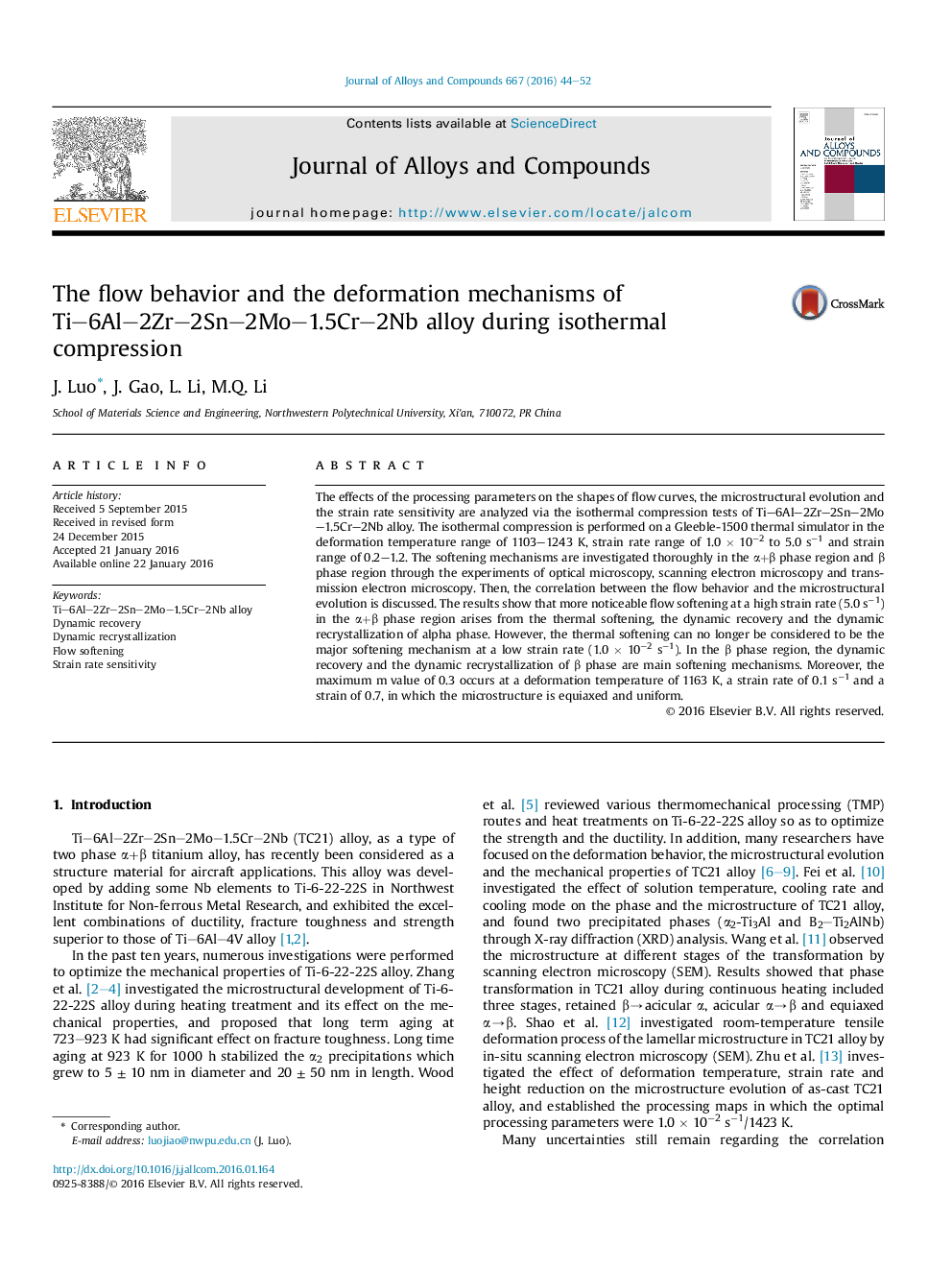| Article ID | Journal | Published Year | Pages | File Type |
|---|---|---|---|---|
| 1606546 | Journal of Alloys and Compounds | 2016 | 9 Pages |
Abstract
The effects of the processing parameters on the shapes of flow curves, the microstructural evolution and the strain rate sensitivity are analyzed via the isothermal compression tests of Ti-6Al-2Zr-2Sn-2Mo-1.5Cr-2Nb alloy. The isothermal compression is performed on a Gleeble-1500 thermal simulator in the deformation temperature range of 1103-1243 K, strain rate range of 1.0 Ã 10â2 to 5.0 sâ1 and strain range of 0.2-1.2. The softening mechanisms are investigated thoroughly in the α+β phase region and β phase region through the experiments of optical microscopy, scanning electron microscopy and transmission electron microscopy. Then, the correlation between the flow behavior and the microstructural evolution is discussed. The results show that more noticeable flow softening at a high strain rate (5.0 sâ1) in the α+β phase region arises from the thermal softening, the dynamic recovery and the dynamic recrystallization of alpha phase. However, the thermal softening can no longer be considered to be the major softening mechanism at a low strain rate (1.0 Ã 10â2 sâ1). In the β phase region, the dynamic recovery and the dynamic recrystallization of β phase are main softening mechanisms. Moreover, the maximum m value of 0.3 occurs at a deformation temperature of 1163 K, a strain rate of 0.1 sâ1 and a strain of 0.7, in which the microstructure is equiaxed and uniform.
Related Topics
Physical Sciences and Engineering
Materials Science
Metals and Alloys
Authors
J. Luo, J. Gao, L. Li, M.Q. Li,
